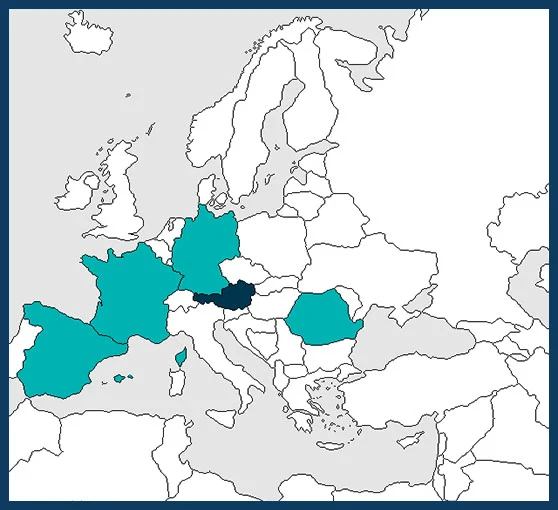01-2015 to 12-2017
€ 920 696
Johann G. Zaller
johann.zaller@boku.ac.at
University of Natural Resources and Life Sciences Vienna, Institute of Zoology, Vienna, AUSTRIA (Coordinator)
and Water Management Research, Petzenkirchen, AUSTRIA
University of Natural Resources and Life Sciences Vienna, Institute of Integrative Nature Conservation Research, Vienna, AUSTRIA
CNRS – Université de rennes 1, EcoBio, Paimpont, FRANCE
University of Göttingen, Department of Agricultural Economics and Rural Development, Göttingen, GERMANY
Research and Development Station for Viticulture and Enology Blaj, Blaj, ROMANIA
University of Agriculture Science and Veterinary Medicine, Department of Horticulture and Landscape, Cluj- Napoca, ROMANIA
Consejo Superior de Investigaciones Científicas (CSIC), Institute for Sustainable Agriculture, Cordoba, SPAIN
University of Cordoba, School of Agricultural and Forestry Engineering, SPAIN

Essential ecosystem services in viticulture landscapes result from diverse communities of organisms and their interactions. Traditional viticulture usually was part of a multifunctional agricultural system including low-input grassland management and fruit production. Therefore, the high diversity of habitats resulted in a high functional biodiversity. However, in the last decades, land use changes and intensification in vineyard management caused a separation of production and conservation areas.
With the aim of integrating biodiversity and agricultural production, VineDivers will examine new approaches at different spatial scales (plot, vineyard and landscape), assess the socio- economic consequences and formulate best practice recommendations for policy and farmers.
More precisely, the objectives of the project are to:
•Determine how different management practices in vineyards and their surroundings affect the relations between the trophic network of plants, soil biota and pollinators and how these functional groups promote ecosystem services in viticultural landscapes;
• Assess which management regime (type and frequency of disturbance) in vineyards of different structural complexity may minimize the trade-offs between productivity and ecosystem services;
• Develop recommendations for farmers, stakeholders and policy makers for management practices in vineyards and their surroundings that sustain ecosystem functioning, biodiversity and high grape yields and wine quality.
In the course of the project, the following activities will be implemented:
• Assessment of landscape diversity, management and aesthetics;
• Examination of biodiversity, the soil-water system and production in vineyards in Spain, France, Romania and Austria;
• Identification and modeling of interactions between biodiversity, landscape diversity, management intensity, and the soil-water system;
•Development of scenarios, regional assessments, evaluations and policy recommendations.
Regarding the dissemination of the project outputs and engagement of stakeholders/policy-makers, strong effort will be made to raise the public awareness for the importance of vineyard management on biodiversity and associated ecosystem services. VineDivers aims to contribute to the dissemination of biodiversity knowledge, between its partners and towards other scientists as well as towards the general public and relevant stakeholders. Specific activities to reach this goal will be implemented such as presentation of results at regional wine growers events, publication of popular science articles in stakeholder relevant journals, dissemination of technical guidelines, and brochures and organization of a day of vineyard biodiversity.